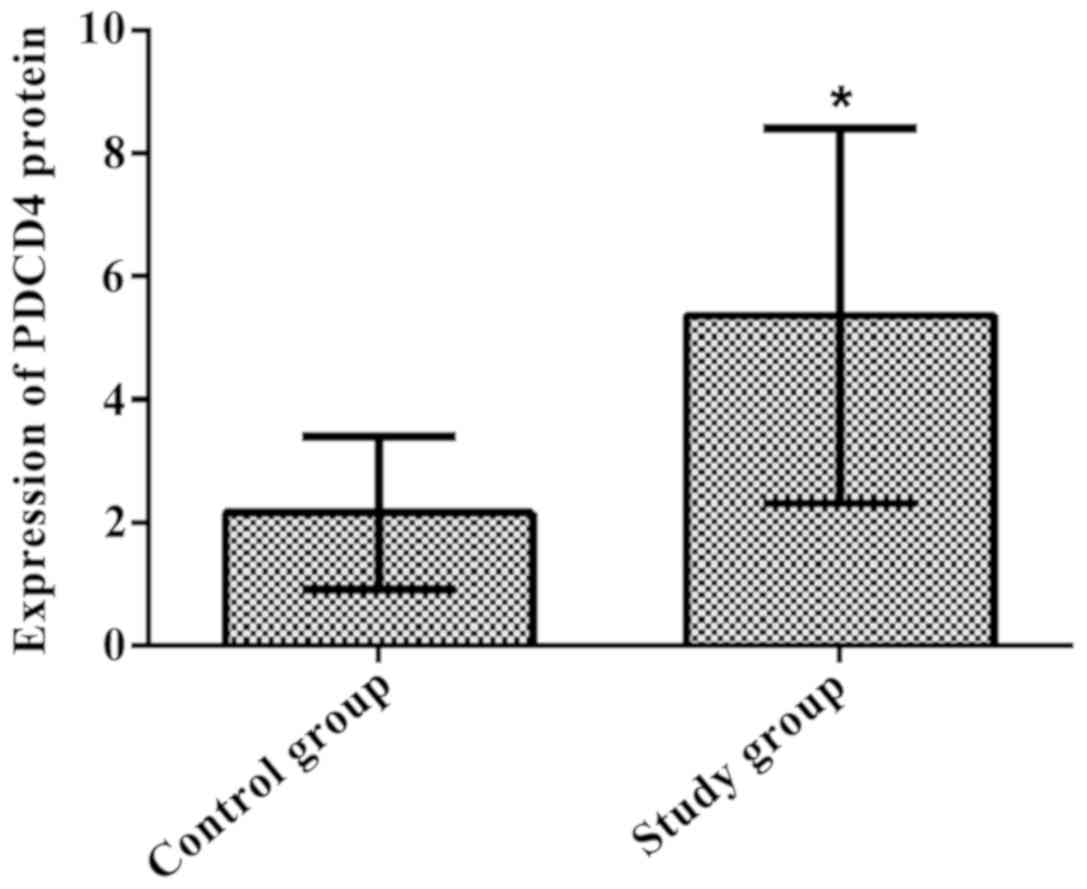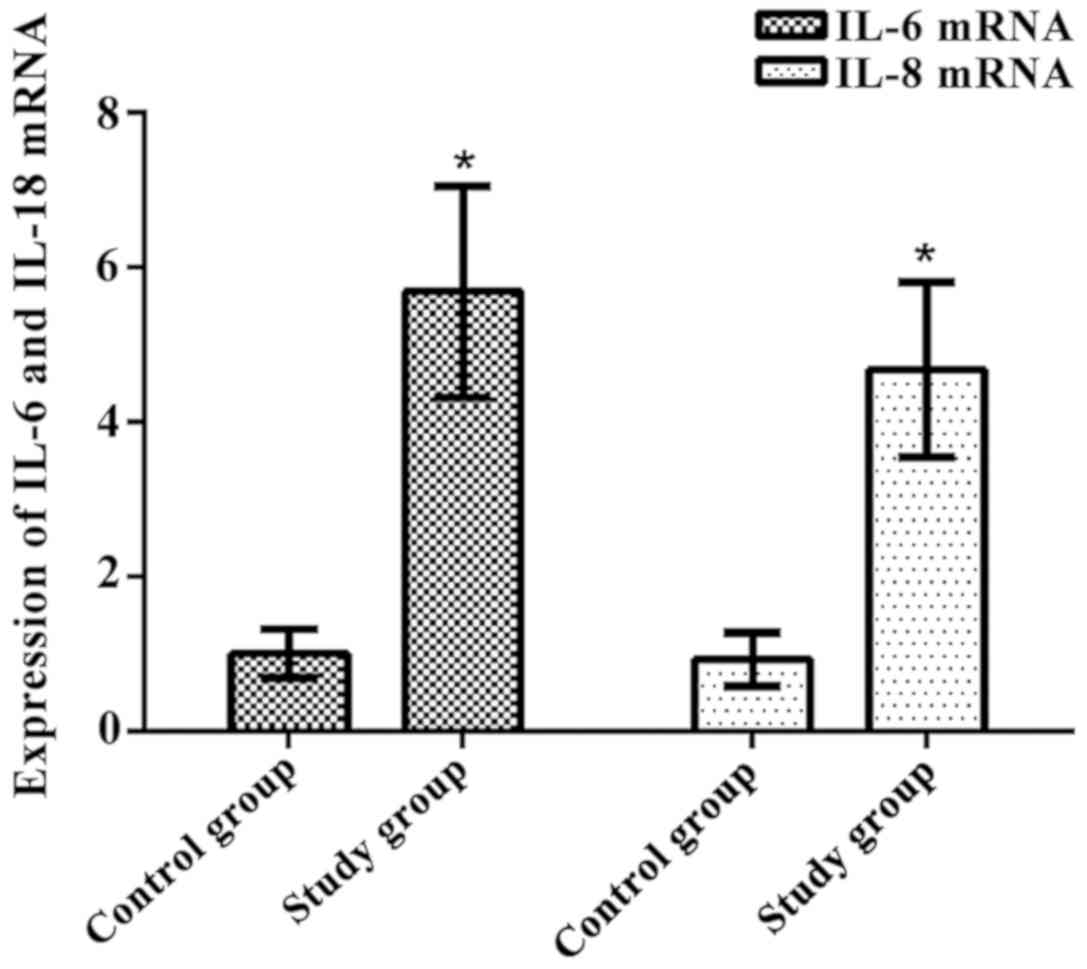|
1
|
Mega JL, Braunwald E, Wiviott SD, Bassand
JP, Bhatt DL, Bode C, Burton P, Cohen M, Cook-Bruns N, Fox KA, et
al ATLAS ACS 2–TIMI 51 Investigators, : Rivaroxaban in patients
with a recent acute coronary syndrome. N Engl J Med. 366:9–19.
2012. View Article : Google Scholar : PubMed/NCBI
|
|
2
|
Aronow HD and Beckman JA: Parsing
atherosclerosis: The unnatural history of peripheral artery
disease. Circulation. 134:438–440. 2016. View Article : Google Scholar : PubMed/NCBI
|
|
3
|
Lee T, Murai T, Isobe M and Kakuta T:
Impact of coronary plaque morphology assessed by optical coherence
tomography on cardiac troponin elevation in patients with non-ST
segment elevation acute coronary syndrome. Catheter Cardiovasc
Interv. 90:905–914. 2017. View Article : Google Scholar : PubMed/NCBI
|
|
4
|
De Ronde M, Kok MGM, Beijk MAM, De Winter
RJ, Van Der Wal AC, Sondermeijer BM, Meijers JCM, Creemers EE and
Pinto-Sietsma SJ: Tissue-derived circulating miRNAs can identify
atherosclerosis and plaque instability. Atherosclerosis.
263:e372017. View Article : Google Scholar
|
|
5
|
Barbato E, Toth GG, Johnson NP, Pijls NH,
Fearon WF, Tonino PA, Curzen N, Piroth Z, Rioufol G, Jüni P, et al:
A prospective natural history study of coronary atherosclerosis
using fractional flow reserve. J Am Coll Cardiol. 68:2247–2255.
2016. View Article : Google Scholar : PubMed/NCBI
|
|
6
|
Jo SH, Kim DE, Clocchiatti A and Dotto GP:
PDCD4 is a CSL associated protein with a transcription repressive
function in cancer associated fibroblast activation. Oncotarget.
7:58717–58727. 2016. View Article : Google Scholar : PubMed/NCBI
|
|
7
|
Liang X, Xu Z, Yuan M, Zhang Y, Zhao B,
Wang J, Zhang A and Li G: MicroRNA-16 suppresses the activation of
inflammatory macrophages in atherosclerosis by targeting PDCD4. Int
J Mol Med. 37:967–975. 2016. View Article : Google Scholar : PubMed/NCBI
|
|
8
|
Ganzetti GS, Busnelli M, Parolini C,
Manzini S, Dellera F, Sirtori CR and Chiesa G: ApoA-I depletion in
chow-fed ApoEKO mice severely worsens coronary atherosclerosis
development. Atherosclerosis. 252:e1042016. View Article : Google Scholar
|
|
9
|
Livak KJ and Schmittgen TD: Analysis of
relative gene expression data using real-time quantitative PCR and
the 2(-Delta Delta C(T)) method. Methods. 25:402–408. 2001.
View Article : Google Scholar : PubMed/NCBI
|
|
10
|
Rodriguez F, Maron DJ, Knowles JW, Virani
SS, Lin S and Heidenreich PA: Association between intensity of
statin therapy and mortality in patients with atherosclerotic
cardiovascular disease. JAMA Cardiol. 2:47–54. 2017. View Article : Google Scholar : PubMed/NCBI
|
|
11
|
Wierer M, Prestel M, Schiller HB, Yan G,
Schaab C, Azghandi S, Werner J, Kessler T, Malik R, Murgia M, et
al: Compartment-resolved proteomic analysis of mouse aorta during
atherosclerotic plaque formation reveals osteoclast-specific
protein expression. Mol Cell Proteomics. 17:321–334. 2018.
View Article : Google Scholar : PubMed/NCBI
|
|
12
|
Vogel ME, Idelman G, Konaniah ES and
Zucker SD: Bilirubin prevents atherosclerotic lesion formation in
low-density lipoprotein receptor-deficient mice by inhibiting
endothelial VCAM-1 and ICAM-1 signaling. J Am Heart Assoc. 6:62017.
View Article : Google Scholar
|
|
13
|
Tsivgoulis G, Katsanos AH, Giannopoulos G,
Panagopoulou V, Jatuzis D, Lemnens R, Deftereos S and Kelly PJ: The
role of colchicine in the prevention of cerebrovascular ischemia.
Curr Pharm Des. 24:668–674. 2018. View Article : Google Scholar : PubMed/NCBI
|
|
14
|
Kurdi A, De MG and Martinet W: Everolimus
attenuates atherosclerotic plaque progression, intraplaque
neovascularization, myocardial infarction and sudden death in a
mouse model of advanced atherosclerosis. Atherosclerosis.
263:e592017. View Article : Google Scholar
|
|
15
|
Maeda N, Abdullahi A, Beatty B, Dhanani Z
and Adegoke OAJ: Depletion of the mRNA translation initiation
inhibitor, programmed cell death protein 4 (PDCD4), impairs L6
myotube formation. Physiol Rep. 5:e133952017. View Article : Google Scholar : PubMed/NCBI
|
|
16
|
Wang L, Jiang Y, Song X, Guo C, Zhu F,
Wang X, Wang Q, Shi Y, Wang J, Gao F, et al: Pdcd4 deficiency
enhances macrophage lipoautophagy and attenuates foam cell
formation and atherosclerosis in mice. Cell Death Dis. 7:e20552016.
View Article : Google Scholar : PubMed/NCBI
|
|
17
|
Dongze W, Jiang Y and Tam LS: FRI0523
Short-term efficacy and safety of new biological agents targeting
the IL-6, IL-12/23 and IL-17 pathways for active psoriatic
arthritis: A network meta-analysis of randomised controlled trials.
Annals of the Rheumatic Diseases. 76:6892017.
|
|
18
|
Gualtero DF, Viafara-Garcia SM, Morantes
SJ, Buitrago DM, Gonzalez OA and Lafaurie GI: Rosuvastatin inhibits
interleukin (IL)-8 and IL-6 production in human coronary artery
endothelial cells stimulated with Aggregatibacter
actinomycetemcomitans serotype b. J Periodontol. 88:225–235.
2017. View Article : Google Scholar : PubMed/NCBI
|
|
19
|
Shankman LS, Gomez D, Cherepanova OA,
Salmon M, Alencar GF, Haskins RM, Swiatlowska P, Newman AA, Greene
ES, Straub AC, et al: Corrigendum: KLF4-dependent phenotypic
modulation of smooth muscle cells has a key role in atherosclerotic
plaque pathogenesis. Nat Med. 22:2172016. View Article : Google Scholar : PubMed/NCBI
|
|
20
|
Fakhry M, Roszkowska M, Briolay A,
Bougault C, Guignandon A, Diaz-Hernandez JI, Diaz-Hernandez M,
Pikula S, Buchet R, Hamade E, et al: TNAP stimulates vascular
smooth muscle cell trans-differentiation into chondrocytes through
calcium deposition and BMP-2 activation: Possible implication in
atherosclerotic plaque stability. Biochim Biophys Acta.
1863:643–653. 2017. View Article : Google Scholar
|
|
21
|
Green DE, Murphy T C and Hart CM:
MicroRNA-21 and PDCD4 mediate antiproliferative effects of PPAR in
hypoxia-exposed human pulmonary artery smooth muscle cells. Am J
Respir Crit Care Med. 193:72792016.
|
|
22
|
Yu X and Li Z: MicroRNAs regulate vascular
smooth muscle cell functions in atherosclerosis (Review). Int J Mol
Med. 34:923–933. 2014. View Article : Google Scholar : PubMed/NCBI
|
















